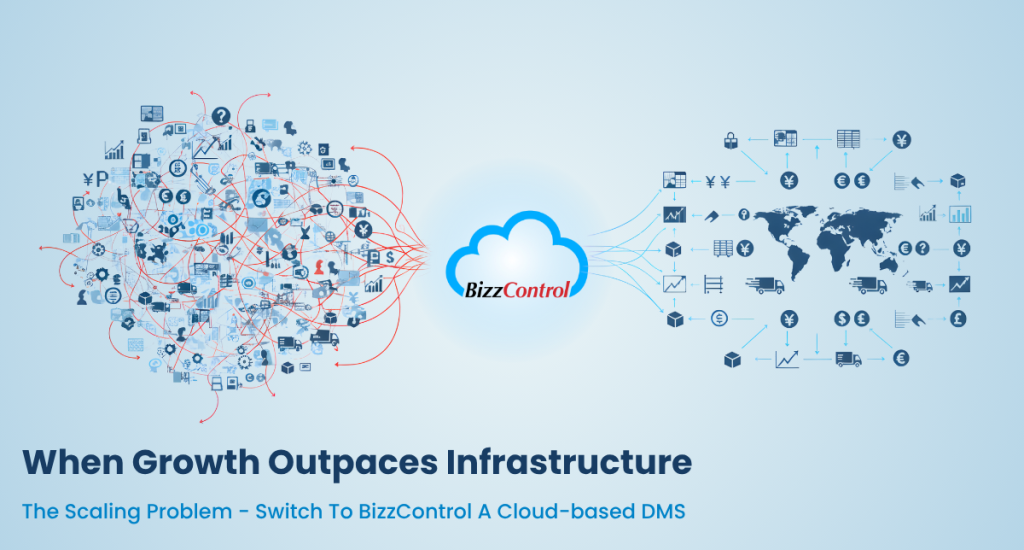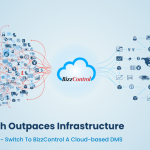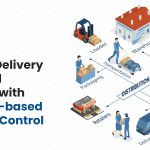Expansion creates complexity. More regions mean different tax structures. More distributors mean varied operational processes. More products mean larger data volumes. More transactions mean higher system loads.
The distribution management systems that served businesses well at smaller scales often struggle when operations multiply. This creates a fundamental challenge: growth in the market gets constrained by limitations in infrastructure.
The Scaling Problem
Distribution networks evolve. A business operating in three states with twenty distributors faces different challenges than one operating in twelve states with eighty distributors. The increase isn’t just quantitative—it’s qualitative.
Multi-region operations introduce variables that didn’t exist before. Each region may have different tax regimes. Transportation logistics vary significantly across geographies. Local regulations and compliance requirements differ. Distributor capabilities and preferences aren’t uniform.
Traditional on-premise distribution management systems were often designed with specific assumptions. Single-region operations. Uniform processes. Predictable transaction volumes. When these assumptions no longer hold, the systems show their limitations.
Performance degradation is common. Systems that processed orders smoothly at lower volumes may slow down significantly as transaction numbers increase. Database queries that returned results instantly may take minutes. Report generation that happened in seconds may require hours.
Customization becomes expensive. When each new region requires custom development work, expansion timelines extend. When every new distributor integration needs specialized coding, scaling becomes resource-intensive. The cost and time required for each addition increases.
Maintenance complexity grows. Multiple custom modifications create technical debt. System updates become risky because changes might break customizations. Different regions running different versions of the system make standardization difficult.
Infrastructure Requirements for Multi-Region Operations
Operating across diverse regions requires distribution systems with specific capabilities.
Multi-currency support is essential for businesses dealing with international operations or cross-border transactions. This includes the ability to define pricing in different currencies, process orders in local currencies, track payments across currencies, and generate reports that consolidate multi-currency data accurately.
Exchange rates need to be managed systematically. Historical rates must be preserved for accurate reconciliation. Consolidated financial reporting needs to handle currency conversions correctly.
Cloud-based architecture provides advantages that on-premise systems cannot match easily. Scalability without infrastructure investment means new regions can be added without server purchases or data center setup. Geographic distribution of computing resources enables better performance across locations. Automatic updates and maintenance reduce IT overhead.
Cloud deployment eliminates the need for physical infrastructure in each region. Distributors can be onboarded without complex installation processes. System performance remains consistent regardless of where users are located.
Integration capabilities determine how well a DMS can work with regional variations in logistics and operations. Different regions often work with different logistics providers. Local compliance systems vary. Payment gateways differ.
A modern DMS needs robust API frameworks that enable connections to various external systems. Pre-built integrations with common logistics platforms reduce implementation time. The ability to ingest data from diverse sources without extensive custom development is valuable.
Performance at scale matters more as operations grow. Systems need to maintain response times as transaction volumes increase. Database architectures should handle larger datasets without degradation. Concurrent user access shouldn’t slow operations.
The difference between a system designed for scale and one that isn’t becomes apparent when load increases significantly. Testing and validation at expected peak volumes are important during system selection.
The Cloud Advantage for Distribution
Cloud-based distribution management systems offer specific benefits for growing businesses.
Infrastructure scales automatically. Additional computing resources are allocated as needed. Storage expands without manual intervention. Network capacity adjusts to demand. This means expansion doesn’t wait for infrastructure projects.
Geographic distribution is built-in. Data centers in multiple locations ensure consistent performance. Users connect to nearby servers automatically. Latency issues from physical distance are minimized.
Updates happen seamlessly. New features become available without manual upgrades. Security patches are applied automatically. The entire user base stays on the current version, eliminating version fragmentation issues.
Disaster recovery is simplified. Data replication across multiple locations is standard. Backup and restoration procedures are automated. Business continuity is more robust than most on-premise configurations can achieve practically.
Cost structure shifts from capital expenditure to operational expenditure. Server purchases are eliminated. Data center maintenance is unnecessary. IT staffing focused on infrastructure management reduces. Budget predictability improves.
Managing Regional Complexity
Distribution networks spanning multiple regions face operational challenges that single-region operations don’t encounter.
Tax calculations must account for regional variations. GST rates differ by state. Inter-state transactions have different tax implications than intra-state ones. Compliance reporting requirements vary. The system needs to handle these variations correctly without manual intervention.
Pricing strategies may vary by region. Transportation costs differ significantly. Local competitive dynamics influence pricing decisions. Promotional schemes might be region-specific. The ability to configure regional pricing rules while maintaining central visibility is important.
Distributor capabilities aren’t uniform. Some distributors have sophisticated systems. Others operate with basic software. Some are comfortable with digital processes. Others need simpler interfaces. The DMS needs to accommodate this diversity without creating separate systems for each type.
Logistics coordination becomes more complex. Different regions use different transportation providers. Delivery timelines vary by geography. Tracking mechanisms differ across providers. Consolidated visibility across all these variations requires systematic integration.
Inventory distribution across regions needs intelligence. Demand patterns differ by location. Seasonal variations aren’t uniform. Stock transfer between regions may be necessary. Real-time visibility into inventory across all locations enables better allocation decisions.
What BizzControl Provides
BizzControl is designed specifically for manufacturers who need to manage distribution complexity across regions.
Cloud-native architecture means deployment doesn’t require infrastructure setup. New regions can be added through configuration rather than installation. Performance remains consistent as the distribution network expands. Automatic scaling handles volume increases without manual intervention.
Multi-currency operations are built into the system foundation. Pricing can be defined in any currency. Orders process in local currency. Consolidated reporting handles currency conversions accurately. Exchange rate management is systematic. Historical rates are preserved for accurate financial reconciliation.
Integration framework enables connections to regional logistics providers without custom development projects. APIs facilitate data exchange with external systems. Different regions can work with different service providers while maintaining centralized visibility.
Performance architecture maintains response times even as transaction volumes grow significantly. The database design handles large datasets efficiently. Concurrent user access across regions doesn’t degrade system speed.
Regional flexibility allows configuration of region-specific rules, workflows, and processes. Tax calculations adjust automatically based on transaction geography. Pricing rules can vary by region while maintaining central control. Compliance requirements are configured rather than hard-coded.
Unified visibility provides management with consolidated views across all regions. Regional drill-down enables detailed analysis. The system aggregates data from all locations while preserving regional detail.
The goal is to enable expansion without infrastructure constraints. When businesses decide to enter new regions, the distribution management system should facilitate that decision, not complicate it.
Making Infrastructure Decisions
Businesses evaluating distribution management systems for multi-region operations should consider several factors.
Deployment model affects expansion flexibility significantly. Cloud-based systems enable faster regional rollout. On-premise systems require infrastructure investment in each region. Hybrid approaches offer some benefits of both but add complexity.
Integration capabilities determine how easily the system works with regional variations. Pre-built connectors reduce implementation time. Robust API frameworks enable custom integrations when needed. The ability to work with diverse external systems is valuable.
Currency handling needs to be native, not an afterthought. Systems where multi-currency was added later often have limitations. Look for platforms where currency management is fundamental to the architecture.
Scalability should be proven, not theoretical. Ask about existing implementations at similar or larger scale. Performance under load should be tested during evaluation. Architecture should be designed for growth.
Regional customization needs to be achievable without creating maintenance problems. Configuration-based approaches are better than code customization. The system should allow regional variations while maintaining a single codebase.
Total cost includes more than licensing. Consider implementation costs across regions. Factor in ongoing maintenance. Account for integration expenses. Calculate the cost of delays if expansion is constrained by system limitations.
Planning for Growth
Businesses planning regional expansion should evaluate infrastructure readiness early.
Current system capabilities need honest assessment. Can it handle operations in new regions without significant modification? Does it support the currencies and tax structures of target regions? Will performance remain acceptable as volumes increase?
Integration requirements should be identified in advance. Which regional logistics providers will be used? What local systems need connectivity? What data exchange will be necessary?
Timeline expectations need to be realistic. How quickly can new regions be operationalized? What lead time does system setup require? Can expansion happen in parallel across multiple regions, or must it be sequential?
Resource requirements should be planned. What IT support will regional rollout need? How much custom development will be necessary? What training will regional teams require?
The cost of infrastructure limitations is often underestimated. Delayed expansion has opportunity costs. Manual workarounds consume resources. Performance issues affect productivity. Integration gaps create visibility problems.
Infrastructure investment should anticipate growth, not just serve current needs. Systems selected should support the business plan for the next several years, not just current operations.
The Bottom Line
Distribution management infrastructure either enables growth or constrains it. When systems can’t keep pace with business expansion, growth opportunities are lost.
Modern cloud-based systems like BizzControl are built specifically to handle the complexities of multi-region distribution. They provide the multi-currency support, integration flexibility, and scalability that growing businesses require.
The question for expanding businesses isn’t whether infrastructure matters. It clearly does. The question is whether current systems are ready for planned growth, or whether infrastructure upgrades should happen now rather than after limitations have already created problems.
Learn how BizzControl supports multi-region distribution operations at zylem.co.in






